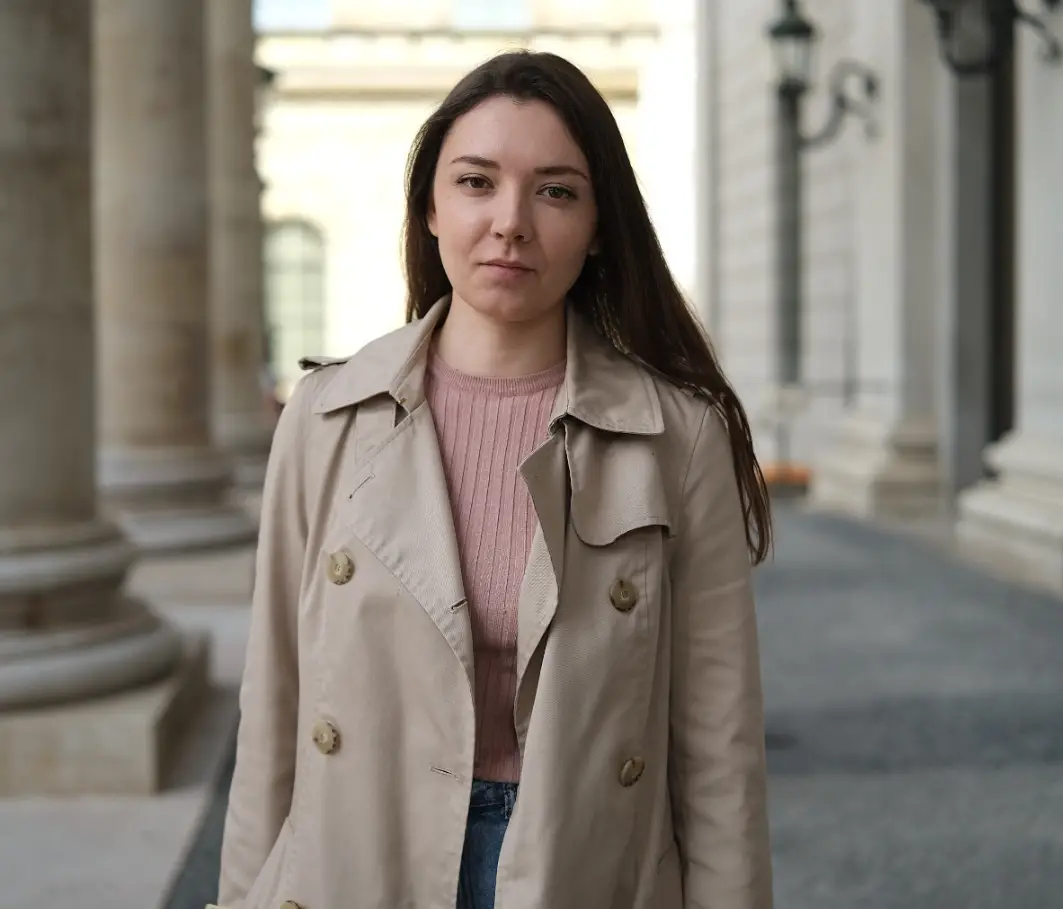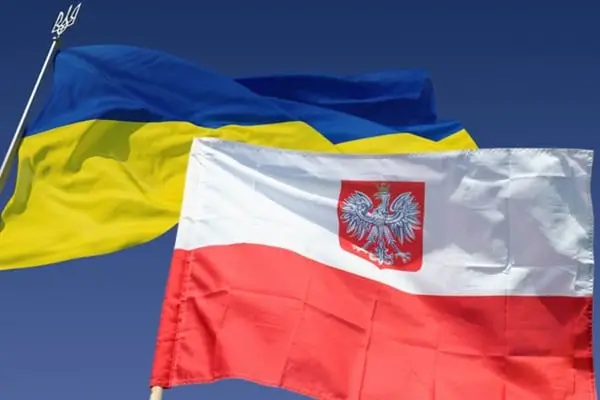Unconquered
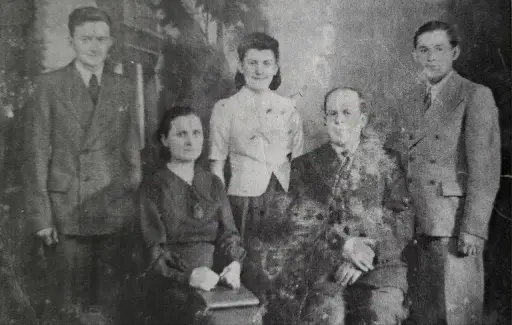
After the brutal suppression of the uprising, the residents of Babchyntsi did not stop fighting against the moscow occupation authorities
The kushnir-brothers did not lay down their arms: Mykola, Danylo, Ivan, and Petro were active participants in the Babchyntsi-Iampil uprising. They created the Black Raven insurgent unit, the backbone of which was made up of Babchyntsi residents: Kushnir Mykola Yakovych, the unit's commander, Kushnir Danylo Yakovych, Kushnir Ivan Yakovych, Kushnir Petro Yakovych, Basenko Kindrat Pylypovych, Hulvachuk Matvii Yakymovych, Krauser Hryhorii Antonovych, Rudyi Roman Oleksiiovych, and Sobar Dmytro Ostapovych, Sobar Tymofii Prokopovych, Slidzievskyi Franz Ivanovych, Chornyi Hryhorii Arsenovych, Lysyi Volodymyr Stepanovych, Shpanskyi Zotii Feodosiiovych, Dehodii Yosyp Martynovych, Yakovets Stepan, Tomashevskyi Zynovii and other residents of the district.
The detachment underwent combat training in Romania and from there made raids on the occupying Moscow organizations. The communist henchmen trembled with fear when they heard the names of the Kushniras. On the territory of the Podillia region, the detachment had its own reporting apartments, underground agents, and horses, which increased the detachment's combat effectiveness. Mykola Kushnir, the detachment commander, a tall man with long hair, was highly respected among the villagers. Mykola was a man of great strength, who reacted painfully to injustice and was always ready to help people. Scanty archival data also shows that Danylo Kushnir, Mykola's brother, served as a Cossack in the first exemplary instructor's hundred of the 15th Odesa Regiment in 1918. He was a highly educated and literate man at the time. Danylo was the deputy commander of the detachment and repeatedly carried out successful combat operations against the invaders who captured the Ukrainian People's Republic.
The Kushnir brothers' unit, the Black Raven, had good training. They were battle-hardened, knew the terrain well, and were very mobile. The soldiers of the unit always marched in a chain behind each other. The detachment crossed the border dozens of times, hiding in Romania, where it had close ties with officers of the Ukrainian People's Republic who did not stop fighting against the moscow occupiers. From the KGB Cheka archives: Mykola Kushnir's unit was registered by the occupiers on November 3, 1924. The local authorities were frightened by numerous attacks on their premises and their communist activists. On October 19, 1924, five insurgents from the Black Crow detachment – Mykola Tomashevsky, Volodymyr Lysyi, Stepan Yakovets, Roman Rudyi, and Kindrad Basenko – seized the head of the KNS Melnyk near the village of Tatkiv, Yampil district, and took away his weapons and important documents.
On December 17, 1924, rebels led by Kindrad Basenko attacked the deputy chairman of the Babchynets district executive committee, the police chief, and the cashier, and took away their weapons and money. Our rebels showed real resilience in the village of Babchyntsi on December 20, 1924. On that day, a strike group of the occupying border guard detachment from Mohyliv-Podilskyi surrounded the house of a resident of Chaikovska, where the detachment commander Mykola Kushnir and Kindrat Basenko were staying. In a fierce firefight, three border guards were killed. In this battle, Kindrat Basenko was wounded in the leg. However, under the cover of fire led by ataman Mykola Kushnir, they managed to run to the church and with their comrades broke away from the pursuers. In response to this attack by the border guards, the rebels fired on the house where the Chekists were stationed on December 23, 1924, and on the night of December 27-28, they attacked the house of the head of the CNS of the Yaruzhsky District Executive Committee of the Yampolsky District.
On the night of December 28-29, a detachment of insurgents, together with Nikolai Kushnir, made a bold attack on the cooperative in the village of Mervintsy, and in the evening, January 3, 1925, on the cooperative in the village of Doroshovka, Yampol district. Already on January 5, the insurgents were agitating against the moscow occupation authorities in the village of Bukatinka, where all its activists hid from fear.
A particularly bold act was committed by members of the Black Crow unit in the village of Busha. On January 11, 1925, at about 9 p.m., they, led by Kindrat Basenko, entered the village building. A meeting on land management was taking place there. After agitating against the communist government, they ordered everyone to sing "Ukraine has not yet died".
On January 13, 1925, the Black Crow detachment of 8 people seized the Yaruzky District Executive Committee, which was located in the village of Bandyshivka. It was a bold operation. The insurgents took 3,326 carbines, 2 revolvers, 4 rifles, police files, and secret correspondence of communist agents, as well as the seal and stamp of the district executive committee. They made another attack on the Yaruzky District Executive Committee on February 3, 1925. Dressed in leather jackets, they took from the premises the personal files of unreliable people and secret correspondence of the authorities. According to reports from the anti-people communist authorities, their agents, and special services, on January 20, 1925, a detachment of six men and one woman, Paraska Achukova, led by Danylo Kushnir, crossed the border of boyarist Romania near the town of Otaci.
Having received instructions from Ukrainian officers there, having gathered food and ammunition, they returned to the so-called Soviet side. A special unit of border guards and local police was created to eliminate Kushnir's group. On March 21, 1925, the Chekists organized an ambush in the house of Dmytro Sobar, a resident of the village of Babchyntsi, but they failed to capture any of the detachment members by surprise. They were spotted in advance. The rebels opened furious fire on the Moscow henchmen and, taking advantage of the darkness, disappeared. However, the punishers managed to capture Dmytro Sobar.
People could see that the rebel group led by M. Kushnir was not fighting against ordinary people, but against their oppressors and supporters of the occupation authorities. At the end of August 1925, M. Kushnir, the detachment commander, decided to visit his father Yakiv, mother Iryna, and sister Frosyna, who was 17 years old at the time. He, along with his brothers Kindrat Basenko and Roman Rudyi, visited his parents' house at night, not knowing that border guards and local police were waiting for him and his brothers every night. Mykola and his brothers are captured before they can fire a single shot. They are tied up and thrown onto a wagon, and at dawn, accompanied by four border guards, they are sent to the town of Yampil. However, someone warns Danylo Kushnir and his rebels that their comrades have been captured.
Having excellent horses in their squad, the rebels outrun the border guards carrying the prisoners and ambush them near the village of Trostyanets. When the convoys approached a cornfield, the insurgents jumped out, armed to the teeth, and freed their comrades from captivity. But it did not end there. Kindrat Basenko, who was very fond of all sorts of humorous pranks, decided to mock a supporter of the Moscow authorities. He, together with Roman Rudyi, Dmytro Sobar and Hryhoriy Chornyi, dressed in military uniforms taken from border guards, and took the prisoners to Yampil, where they were handed over as insurgents.
The occupation, so-called "Soviet agents" had been tracking the rebel group for a long time and very carefully, trying to destroy the leader of the group, Mykola Kushnir, by all means. The residents of the village of Babchyntsi and the entire district were always under pressure to reveal the whereabouts of the insurgents. The occupation authorities attributed all petty crimes that took place in the villages to the insurgent detachment, calling them a "gang". In October 1925, Mykola Kushnir, returning from Romania with Kindrat Basenko, was ambushed by a strike group of the GPU and local police. The district police unit was headed by a Komsomol activist, Yurii Nochko, sent from Kyiv. After exchanging gunfire, Mykola and Kindrat Basenko retreated to a barn near the river. The punishers opened fire on the rebels, during which the brave leader Mykola Kushnir was seriously wounded.
The rebels put up a fierce resistance, firing back at the punishers, but the forces were unequal. Acrid smoke, burning the barns, made it impossible to breathe. Seeing the hopelessness, the heavily wounded ataman ordered Kindrat to flee. Covering the retreat of his comrade, he did not surrender to the enemies. When they asked him to surrender, he replied: "You can take my body as a prisoner, but never my soul". And he blew himself up with a grenade. This is how the glorious life of the brave rebel leader, a glorious son of Ukraine, Mykola Kushnir, who devoted his entire life to the struggle for the freedom of the Ukrainian people, ended. After the death of the brave leader Mykola Kushnir, the Black Raven detachment, or as it is also popularly called, the Kushnir Brothers, did not stop its struggle for the freedom of Ukraine. It was led by Mykola's brother Danylo Kushnir, a brave, intelligent leader. In the spring of 1926, the detachment revived its armed confrontation with the communist government.
On the night of March 15, arrested rebels Dmytro Sobar, Stepan Yakovets, Volodymyr Lysyi, Vasyl Liashenko, Anton Shvets, and Petro Makovets escaped from the dungeons of the Mohyliv-Podilskyi GPU. Three days later, a detachment consisting of the fugitives shot and killed a local Soviet activist, a member of the People's Militia, Hnat Pochvirnyi, in the village of Babchyntsi.
This activist did not allow people to live, persecuted his fellow soldiers, entered houses, took all the food he saw. He drove people out of their homes, sometimes even setting them on fire. The villagers complained to the insurgents, and they shot him dead.
In the spring of 1926, from May 16 to 20, a group of insurgents intended to cross the Romanian border. moscow punishers ambushed them near the villages of Hamulivka and Busha. As a result of a fierce night battle, the Chekists killed Stepan Yakovets and wounded the brave Kindrat Basenko. Already wounded, bleeding and firing back, he managed to break away from the pursuit.
The insurgents' forces were dwindling every day and were on the verge of exhaustion, unable to continue the fight. Some of them moved to Romania and settled there, others died during punitive operations, not wanting to leave their native land. On December 19, 1926, a punitive special operation was carried out against the rebels in the village of Babchyntsi, in which communists from the Mohyliv-Podilskyi department of the GPU and the district police took part.
Kindrad Basenko, one of the most active rebels, was killed in a fierce battle. The Chekists captured the brave Roman Rudyi, who was wounded in both legs and arms, but still fired back until he ran out of ammunition. After the battle, the rebels seized weapons and ammunition that were stored in the house of Vasyl Basenko, Kindrad's brother. He was arrested. Trying to cross the border with Romania, Ivan Kushnir was killed in action. No one knows what happened to Petro Kushnir. There is no material about him in the archives.
Despite the heavy losses of the rebels, the Black Raven detachment continued to fight, led by Danylo Kushnir. Here is what the communist agents reported at that time:
"Mohyliv-Podilskyi District Department of the GPU to the chairman of the regional executive committee of LLC Korobkin dated April 10, 1929. A sabotage gang (as the authorities called all the rebels) of Kushnir, with a main asset of 16 people, is actively operating in the territory of the Mohyliv-Podilsky district, which, on the instructions of enemy intelligence, raided party trade union organizations, killing communists, robbing village councils, district executive committees. The gang carried out up to 50 raids".
In 1928, in the village of Babchyntsi, on the initiative of Sava Ladaniuk, the first Komsomol member, unique bells were removed from the church. In addition, he was one of the most active members of the prodotryad. He took part in the confiscation of grain from his fellow villagers, seizing it by force. After another confiscation of grain, the rebels shot him. The bullet hit him again, but he managed to escape at dusk.
At the end of 1929, Danylo Kushnir and Hryhorii Kraus and other members of the detachment arrived in the village of Babchyntsi to take their families to Romania. Danylo's wife Natalia and their young daughter Mariia did not dare to go to Romania. Danylo persuaded his wife for a long time, but his persuasion was in vain. He married for the second time to Semen Klymyk's daughter Yevdokiya, crossed the border with his brothers and settled in Romania. In 1931, the Kushnir brothers' unit ceased its combat activities. "Black Raven" was a true example of patriotic fighters and continued the struggle even when its fervor had already faded throughout the communist empire, the Soviet Union.
What was the fate of the villagers of Babchyntsi who participated in the Babchyntsi-Yampil Uprising
210 villagers were repressed. Many of them were shot, including Frosyna, the sister of the Kushnir brothers and her husband Pavlo. On the order of the People's Commissar of Internal Affairs of the USSR of 26.10.1930. The sentence was executed on 16.11.1930 in the city of Vinnytsia. Frosyna was survived by 4 young children, who were raised by her mother-in-law, Daryna.
The bloodthirsty communist repressive apparatus did not spare anyone from Babchyntsi. In early 1942, rebel commander Danylo Kushnir arrived in the village of Babchyntsi in a black phaeton drawn by white horses like swans from Romania. He visited the Romanian occupation commandant's office, after which the Romanians became much more loyal to the Babchyntsi residents. This is not surprising because at that time, Danylo was the head of one of the departments of the information center in the 8th Romanian Army.
This event shook the whole village. Romanians treated him with respect. Kushnir's daughter from his first wife, Maria, complained to Danylo that Jusko Gursky had broken into her house. He found Gursky, and the latter, trembling with fear, returned the door. Danylo married his daughter Maria to Mykhailo Korinevsky. He organized a loud wedding for the newlyweds and returned to Romania. After the war, in the 50s and 60s, until almost the 1970s, Danylo Kushnir, who lived in Romania, sent letters and photographs to his daughter Maria. Here are a few of them:
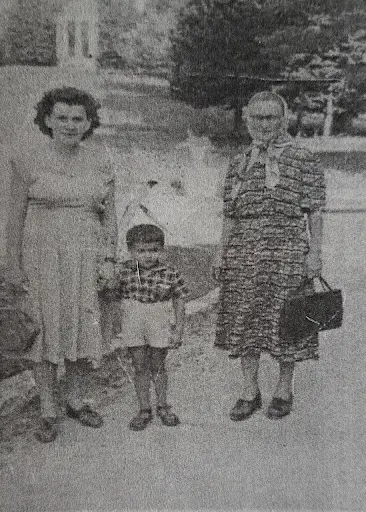
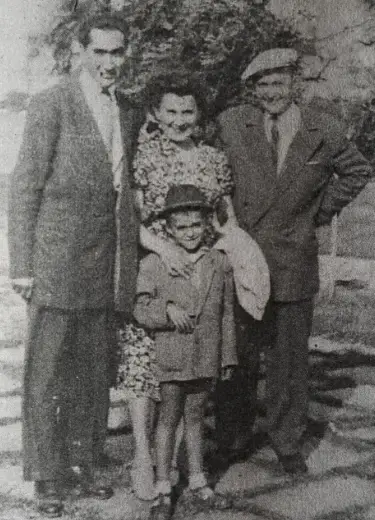
The KGB and the State Security Commission repeatedly summoned Maria and her son Borys to Mohyliv-Podil for interviews. They were always under close surveillance by the "competent" authorities, who thought that Danylo might appear in the village under a false name. They demanded that Maria and Borys immediately report this fact.
The author is looking for the descendants of Danylo Yakovych Kushnir, born in 1900, Hryhorii Arsenovych Chornyi, born in 1904, Franz Ivanovych Slidzievskyi, born in 1900, Tymofii Prokopovych Sobar, born in 1894, and Dmytro Ostapovych Sobar, born in 1898, who moved to Romania after fighting the moscow-Bolshevik regime.




